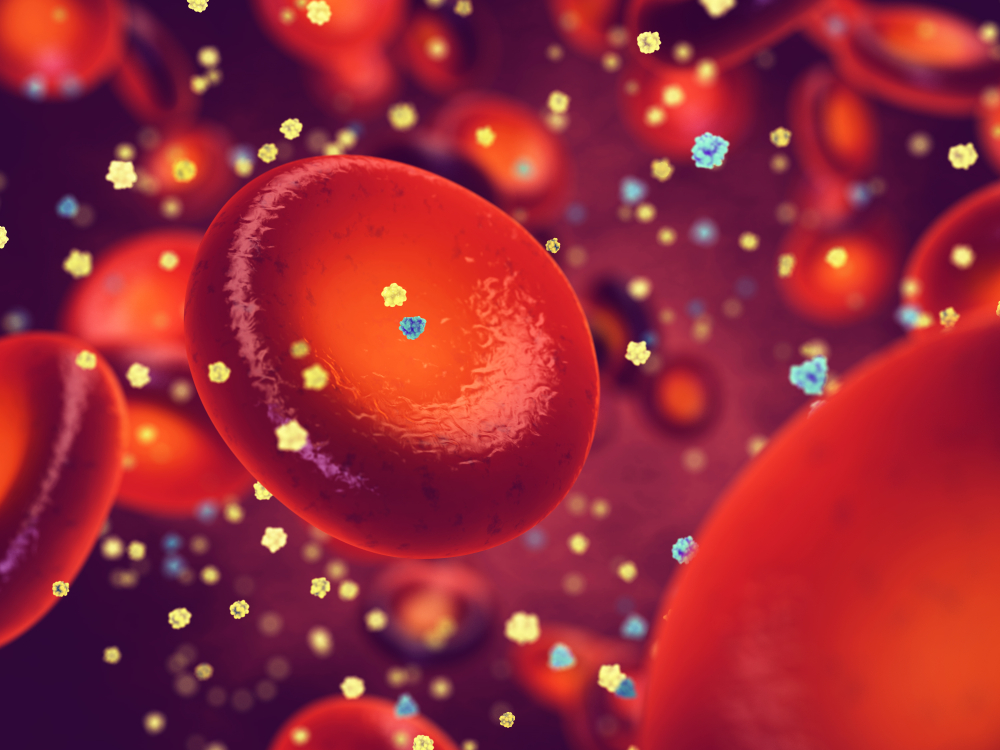
What is being tested?
Potassium is present in all body fluids, but most potassium is within your cells, with only a very small amount in the serum or plasma component of the blood. Because the blood concentration of potassium is so small, minor changes have significant consequences. If potassium goes too low or too high, your health may be impaired: you could be at risk of developing shock, respiratory failure, or heart rhythm disturbances. An abnormal concentration can alter the function of the nerves and muscles; for example, the heart muscle may lose its ability to contract.
How is it used?
Blood tests are performed to diagnose levels of potassium that are too high (hyperkalaemia) or too low (hypokalaemia). The most common cause of hyperkalaemia is kidney disease but many drugs can decrease the amount of potassium excreted from the body and result in this condition. Hypokalaemia can occur if you become dehydrated, for example due to diarrhoea and vomiting, or if you are sweating excessively. Potassium can also be lost through your kidneys in urine; in rare cases, potassium may be low because you are not getting enough in your diet. Drugs can cause your kidneys to lose potassium, particularly diuretics ('water pills'), resulting in hypokalaemia. Once your doctor discovers the reason for the too-high or low potassium levels, treatment can be commenced.
When is it requested?
Blood potassium levels are routinely measured as part of the clinical investigation of many diseases. It is measured in those who take diuretics or heart medications, and in the investigation of high blood pressure and kidney disease. It is also used to monitor patients on kidney dialysis or diuretic therapy, and patients receiving intravenous therapy on a drip.
What does the result mean?
A raised blood potassium level is called hyperkalaemia. This may indicate the following health conditions:
Certain drugs can also cause hyperkalaemia in a small percent of patients. Among them are non-steroidal anti-inflammatory drugs (such as ibuprofen); beta-blockers (such as propanolol and atenolol), angiotensin-converting enzyme (ACE) inhibitors (such as captopril, enalapril and lisinopril), angiotensin II receptor blockers (ARBs) (such as telmisartan) and potassium-sparing diuretics (such as triamterene, amiloride and spironolactone).
A low blood level of potassium is called hypokalaemia and may occur in a number of conditions, including:
If you have diabetes, your potassium may fall after you take insulin, particularly if your blood glucose levels have been out of control for a while. Low potassium is commonly due to 'water pills' (diuretics); if you are taking these, your doctor will check your potassium level regularly.
Reference Intervals
Adult
3.5- 5.2 mmol/L
Paediatric
0 day to <1 week 3.8-6.5 mmol/L
1 week - 26 weeks 4.2- 6.7 mmol/L
26 weeks - 2 years 3.9-5.6 mmol/L
2 years - 18 years 3.6- 5.3 mmol/L
The reference intervals shown above are known as a harmonised reference interval. This means that eventually all laboratories in Australia will eventually use this same interval so wherever your sample is tested, the reference interval should be the one shown above. Laboratories are in the process of adopting these harmonised intervals so it is possible that the intervals shown on the report of your results for this test may be slightly different until this change is fully adopted.
Is there anything else I should know?
The way that your blood is taken and handled may cause the potassium level in the sample to be falsely high. If you clench and relax your fist a lot while your blood is being collected, this can make potassium rise. If blood comes out of your veins too fast or too slow, the blood cells can burst and release potassium into the blood, giving a falsely raised potassium result. Some tubes that are used to collect blood into contain potassium salts as a preservative. If your blood is collected into one of these by mistake potassium will be falsely high.
Potassium can also be elevated if the specimen takes a long while to travel from your GP surgery or collection centre to the laboratory.
If there are any questions as to how your blood was collected, your doctor may request that the test be repeated before starting any treatment.
Common questions
Treatment for low potassium may include the use of potassium chloride supplements and increasing the amount of potassium-rich foods in the diet, such as bananas, beef or spinach. Treatment for high potassium may include the use of diuretics, kidney dialysis or insulin injections.
A number of fruits, vegetables and meats are good sources of potassium. Examples are bananas, melons, oranges, potatoes, spinach, broccoli, milk, yoghurt, turkey and beef.
No. Electrolyte tests are performed by trained scientists using highly sensitive instruments in accredited laboratories.
Sports drinks offer a quick replacement of electrolytes but your body can replenish them naturally using its own storage supply of minerals.
Pathology Tests Explained (PTEx) is a not-for profit group managed by a consortium of Australasian medical and scientific organisations.
With up-to-date, evidence-based information about pathology tests it is a leading trusted source for consumers.
Information is prepared and reviewed by practising pathologists and scientists and is entirely free of any commercial influence.